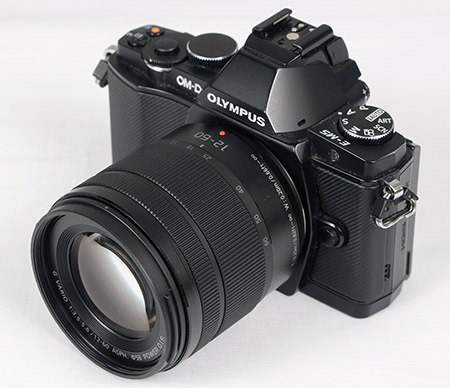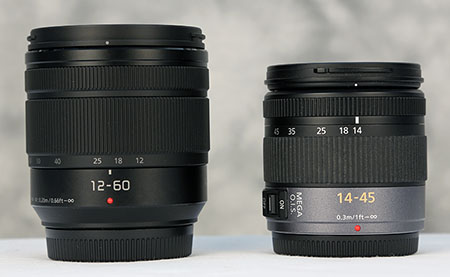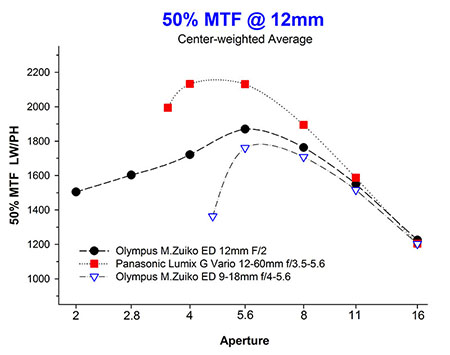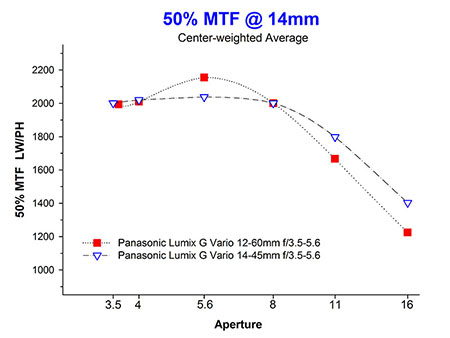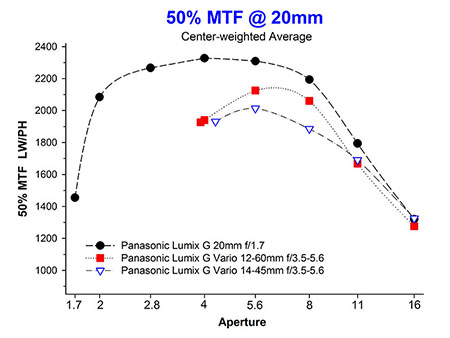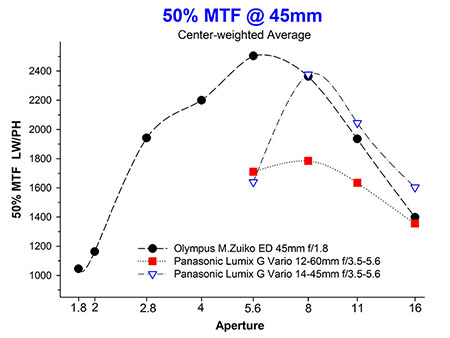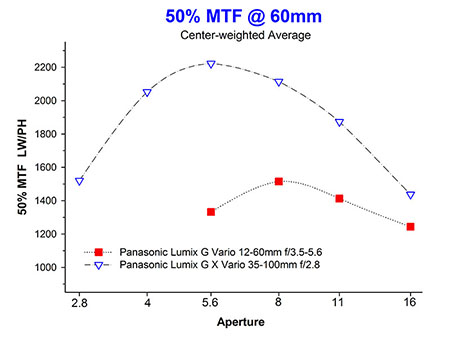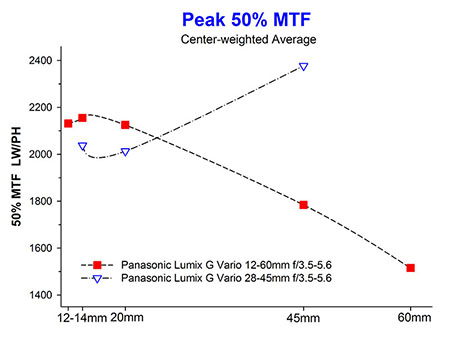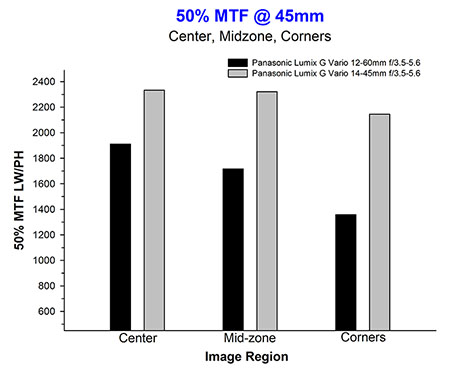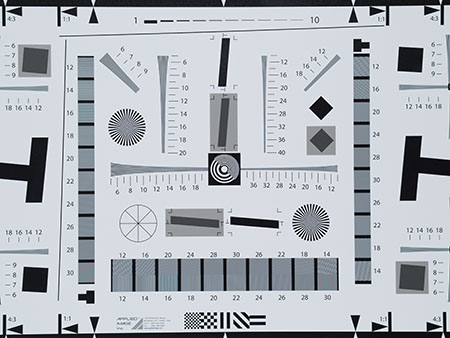Panasonic Lumix G Vario 12-60mm f/3.5-5.6 Review
This review evaluates sharpness (MTF50), distortion, vignetting and other photographic performance characteristics of the Panasonic Lumix G Vario 12-60mm f/3.5-5.6 lens for micro four thirds cameras. I wanted to know if the performance of this recently introduced 5x zoom lens would match or exceed the performance of a light weight 3x zoom that I have been using for travel photography, the Panasonic Lumix G Vario 14-45mm f/3.5-5.6.
The 12-60mm lens offers the advantages of greater wide angle and longer telephoto performance with increased weather proofing from rain and dust compared to the 14-45mm lens. However, I realized going into the evaluation that consumer quality 5x zoom lenses rarely compete favorably against 3x zoom lenses of comparable quality.
Lenses tested in the review for comparison with the Panasonic Lumix G Vario 12-60mm f/3.5-5.6 lens:
- Panasonic Lumix G Vario 14-45mm f/3.5-5.6
- Panasonic Lumix G 20mm f/1.7
- Panasonic Lumix G X Vario 35-100mm f/2.8
- Olympus M.Zuiko ED 12mm f/2
- Olympus M.Zuiko ED 9-18mm f/4-5.6
- Olympus M.Zuiko ED 45mm f/1.8
Cameras used in the review: Olympus OM-D E-M5, Panasonic Lumix G7 and Panasonic Lumix GX7.
MTF50 Results
MTF50 performance was determined using Imatest Master v. 3.7 as described using a SFRplus Chart. A 13 region, center-weighted MTF50 value is posted below as well as center, midzonal, and corners lens performance. Regions of analysis on the SFRplus chart are described HERE. Click on the images to see larger image files.
Light Dropoff (Vignetting)
Light drop off
was significantly more severe in the 12-60mm lens than it was in the in the 14-45mm lens at all focal length tested. Stopping down the 12-60mm in many instance did not eliminate significant vignetting by the lens. Click on graphs to display larger images.
 Vignetting of 12-60mm lens at 12mm, f/5.6 (1.1 EV) |
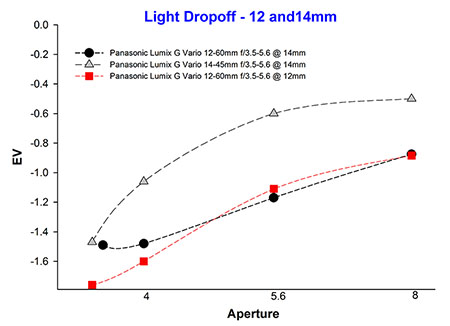 |
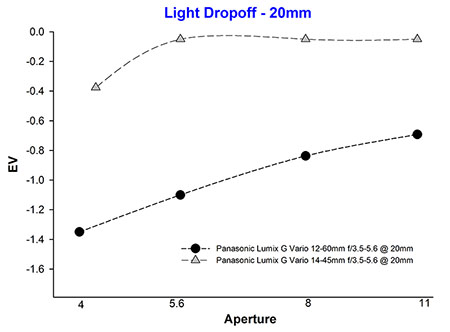 |
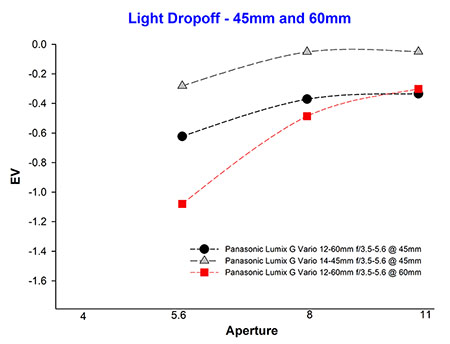 |
Chromatic Aberrations and Distortion
Chromatic aberration wasn't a notable feature of any of the lenses tested. Lateral chromatic aberration values for the 12-60mm lens compared to the 14-45mm lens are shown in the following table. CA in area % from the Imatest analysis is shown for the lens aperture full open with the value at f/5.6 in parentheses except at 45mm and 60mm where only the CA at f/5.6 is shown.
The Imatest site indicates that CA values under 0.04% are insignificant. Values over 0.15% are classified as visible.
| CA area % | 12mm | 14mm | 20mm | 45mm | 60mm |
| 12-60mm f/3.5-5.6 | 0.12 (0.08) | 0.13 (0.11) | 0.12 (0.11) | 0.01 | 0.02 |
| 14-45mm f/3.5-5.6 | 0.07 (0.06) | 0.10 (0.09) | 0.03 |
Neither lenses have noticeable geometric distortion except for the 12-60mm lens which has mild barrel distortion (1.3%) at the 12mm setting.
Test Photographs at 12mm, 20mm and 60mm
 |
Laboratory Chemicals at 12mm, f/5.6 The 12-60mm @ 12mm has excellent image sharpness that outperforms image sharpness of the prime lens. Panasonic Lumix G Vario 12-60mm f/3.5-5.6 @ 12mm Full Frame |
 |
Parking Garage at 20mm The 12-60mm @ 20mm has similar image sharpness to the prime lens. Panasonic Lumix G Vario 12-60mm f/3.5-5.6 @ 20mm, f/8 Full Frame
|
 |
Purple Passion Flower at 60mm The 12-60mm @ 60mm produces a slightly lower quality image than the 35-100mm zoom lens. However, opinions will differ whether the image quality differences are significant. Panasonic Lumix G Vario 12-60mm f/3.5-5.6 @ 60mm, f/8 Full Frame-cropped
|
Test Photographs at 45mm with Mannequin Head Target with Bokeh Test Background
With a maximum aperture of f/5.6 at 45mm, the Panasonic Lumix G Vario 12-60mm f/3.5-5.6 lens would not be your first choice for a portrait lens. Nevertheless, if you can control the background, the 12-60mm lens has all the sharpness you need for portraits. The most interesting results in this test series came from assessing the background blurring (bokeh) produced by the lenses.
A number of lens design characteristics influence the quality of out of focus blur (online references: Merklinger , van Walree and Atkins) including aperture (both f/stop setting and maximal lens opening size), aperture iris shape, and degree of spherical aberration correction.
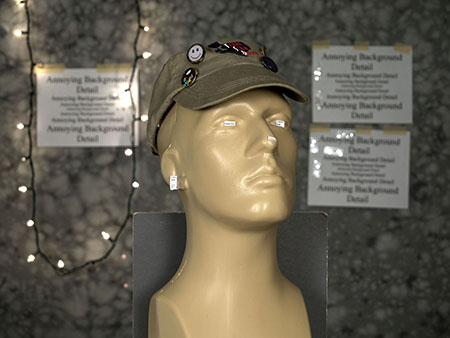 Panasonic 12-60mm f/3.5-5.6 lens @ 45mm f/6.3 Mannequin Head Target with Bokeh Test Background The mannequin is 6 feet (183 centimeters ) in front of the background. The camera is 5 feet (152 centimeters) from the mannequin head. The focus point is the mannequin right eye. |
|
|
 Panasonic 12-60mm f/3.5-5.6 lens @ 45mm f/6.3 Prominent outer rings in the specular light blur discs suggest that the lens in over correcting spherical aberrations and contributing to poor quality background blur. See: Merklinger , van Walree , Atkins |
 Panasonic 14-45mm f/3.5-5.6 @ 45mm f/6.3 Blurring of specular light out of focus discs is a little more diffuse than for the 12-60mm lens. Text is blurred slightly more than the image produced with the 12-60mm lens. |
 Olympus 45mm f/1.8 lens at f/6.3 Even at f/6.3 the 45mm prime has more even blurring of specular light out of focus discs than either the 12-60mm or 14-45mm lens as well as better blurring of text. |
Summary of Findings with Panasonic Lumix G Vario 12-60mm f/3.5-5.6 lens
12mm
The 12-60mm lens is very sharp at 12mm and has excellent MTF50 performance. Negatives are marked vignetting that is not resolved with stopping down the aperture and mild barrel distortion. These optical issues can be overcome with processing raw image files.
14mm and 20mm
The 12-60mm lens has excellent performance at 14 and 20mm. Again, light dropoff is a minor problem that might require correction through raw file processing.
45 and 60mm
MTF50 and image quality drops off at 45 and 60mm with the 12-60mm lens. Users will have differing opinions whether this lower performance offsets the convenience of having a lens with the wide range of performance.
Conclusion on the Panasonic Lumix G Vario 12-60mm f/3.5-5.6 lens
Optical performance of this lens is mixed with excellent overall performance in the 12-20mm range and with mediocre performance in the 45 to 60mm range. The 12mm to 60mm range of the lens is very convenient and weatherproofing offers advantages. However, I'm keeping my 14-45mm lens and will use other lenses in the 12mm and 60 mm range.
posted 24 September, 2016.
© 2016, William L. Castleman
